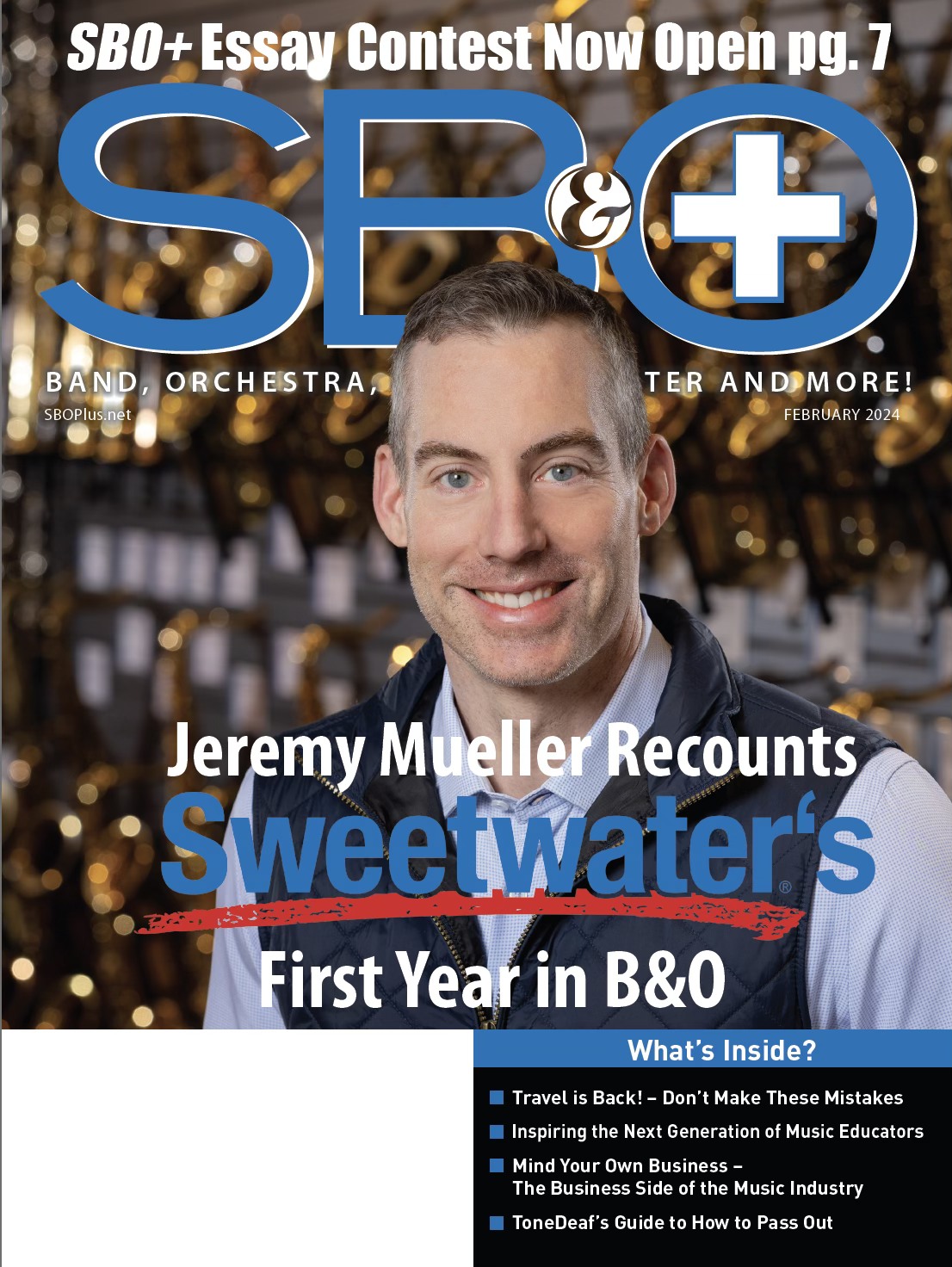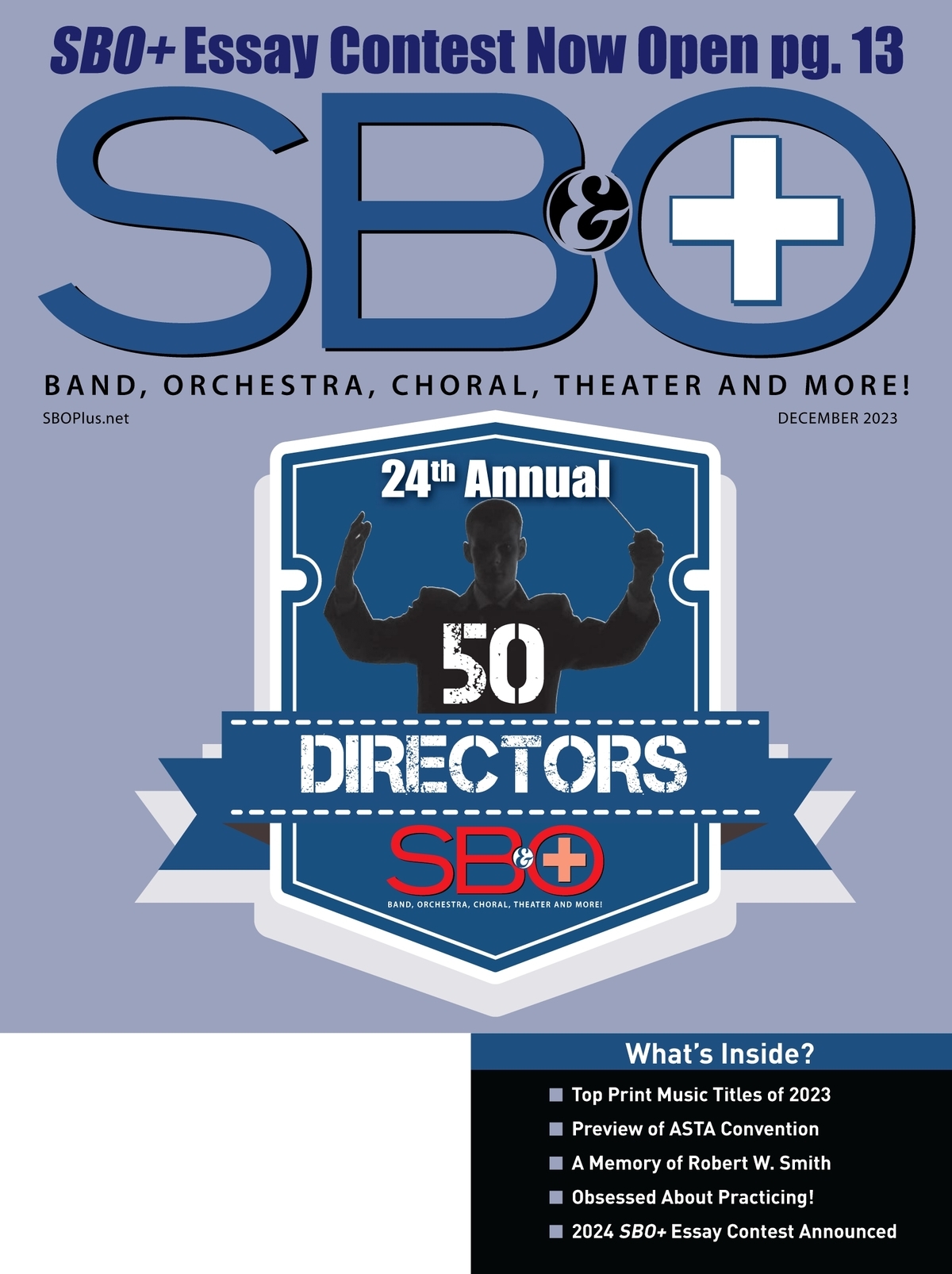EDUCATORS SUBSCRIBE FOR AS LOW AS $0.00! CLICK HERE!

Nothing says Hawaii more definitively than a ukulele. The Hawaii Youth Symphony offers ukulele workshops online and in-person. Ukulele virtuoso Jake Shimabukuro teaches the next generation.
Student string and symphony orchestras frequently play second fiddle to marching and concert bands in the school music education universe. In many communities this shortcoming was addressed over the years by independent youth orchestras formed by dedicated and largely unrecognized music education heroes.
Miami’s Bayfront Park Bandshell already had fame and history by the late 1940s and into the ‘50s. But its fame for a number of young musicians was as the home of the Miami Youth Symphony. This group was established in 1946 by Caesar LaMonaca. Referred to as “Miami’s Man of Music”, his goal was to “keep ‘em off the streets”, referring to his young musicians. The educational value was in the learning, rehearsing and performing of classical works in a full symphony format.
I was a proud young clarinet player under LaMonaca’s direction in this symphony. In addition, I was a tenor drummer in LaMonaca’s Greater Miami Boy’s Drum and Bugle Corps as well as completing my military obligation in the Florida National Guard’s 51st Infantry Band. This military band was yet another LaMonaca creation.
Music education has changed alot over these many years. The Miami Youth Symphony struggled to fill its seats with a lacking of instrumental instruction and even instruments available in the schools. Today’s youth symphonies involve auditions to place students into an appropriate level of orchestra performance. They develop and select only the very best of today’s many well-trained young musicians for their top-level orchestras.
The origin of the Florida Symphony Youth Orchestra (FSYO) began in the Orlando, Florida area in the early 1950’s. Rollins College associate music professor Alphonse Carlo sensed the same dire need for string classes and began free Saturday sessions. These efforts finally reached fruition in 1959 with its first public FSYO concert in 1959.

The Alaska Youth Symphony utilizes a community partner church for rehearsal space.
FYSO describes itself as a music education program. With over 300 students involved, FSYO offers six major programs as well as a summer “Stringmania camp” and a “Sing-Song, String Along” beginners experience. Each major program offering has both an age and experience level target group. The Overture Strings, ages 7-14, move advancing string players into the orchestra experience.
The Prelude group focuses on intermediate level players and enhances the full orchestra experience by rotating positions in each section for musicians ages 9-15. A next step is the Philharmonia, a full orchestra for advanced players that performs standard classics in a number of performances. Performing more difficult classic literature in numerous performances is the Symphony Orchestra. This is a professional, conservatory level group.
At just about the same time, 1946, Howard Webb of the Houston Independent School District and Caralie Wood from the Houston Parks and Recreation Department addressed Houston’s similar shortcoming by forming the Houston Youth Symphony (HYS). Now one of the oldest continuously operating youth orchestras at nearly 75 years, it was a collaboration of these two public groups. This more directly involved the local schools in addressing their music education needs than an independent organization.
Like many other youth music programs, it features levels of groups to address the range of beginner to accomplished student musician. Sinfonia is the introductory orchestra leading to Philharmonia and ultimately the Symphony Orchestra. The Chamber Music Program through its small group environment develops the young musician’s leadership, public speaking and team building skills. These chamber music groups perform for venues that have little or no access to live music. The Melody Program provides private instruction to economically disadvantaged students. The Houston Coda Program is essentially an El Sistema outreach into low-income neighborhoods. Like all El Sistema groups it helps instill self-esteem and a personal sense of value through fun and safe after-school programs.

Socially-distanced Alaska Youth Symphony violinists join the on-site, in-person rehearsal.
Houston is one of the few communities that offers more than one youth orchestra opportunity. The Houston Youth String Orchestra (HYSO) is relatively new on the scene only now in its fourth season. It expands the range of students to include kindergarten (age 5) through high school (19) for string instruments; violin, viola, cello and double bass. Masterclasses and sectionals are led by musicians from the Houston Symphony, Houston Ballet, and the Houston Grand Opera.
Following the development pattern of more established orchestras, there are currently two levels of HYSO orchestras. The Concert Orchestra is the entry level for beginner/intermediate students with minimal ensemble experience. Reading music and experiencing the ensemble environment is objective of this group. The Philharmonic, for intermediate/advanced musicians, learns and experiences a more advanced repertoire. New this year is a solo competition with cash prizes open to all levels.
Under the banner of “Together, we can make music a right, not a privilege!”, the Hawaii Youth Symphony’s mission is to help youth develop to their fullest potential through orchestral music in the setting of our island’s unique culture. Its out-of-school programs serve seven hundred students, 8-18, from over one hundred public, private and home schools from all the islands. Major programs include a Symphony Program, the Academy Program, HYS Jazz, and Music in the Clubhouse. The Symphony Program includes three of the organization’s seven orchestras with a focus on students from Oahu and Maui. Their jazz offering includes both in-person and Zoom sessions.

Alaska Youth Symphony’s young musicians focus on their music in rehearsal.
New this summer, Hawaii Youth Symphony in partnership with the Boys and Girls Club of Hawaii offered a beginning violin course at a private school, Le Jardin Academy. For students eight and older, Super Strings is intended to teach instrumental technique, rhythm patterns, note reading and listening skills, and the basics of group playing. The discipline of home practice is encouraged and expected. An intermediate course for students with one year of experience was also introduced.
The Alaska Youth Orchestras (AYO) mission statement highlights the organization’s holistic role in student’s character. It begins with, “investing in Alaska’s next generation of leaders by teaching high-achieving teen musicians the values of responsibility, commitment, self-confidence, discipline, and teamwork through music education and performance”. The AYO grew directly from the Anchorage school system as part of the first arts program development plan in 1963. That plan included free string courses in elementary schools. Wind and percussion followed shortly and the Anchorage Community College added classes for adults with a focus on the parents of the school age musicians.
Each summer, after a comprehensive audition process, the National Youth Orchestra of the United States of America (NYO-USA) is formed from outstanding musicians aged 16 to 19. This is one of three free educational youth programs of Carnegie Hall. The selected group is then gathered at Purchase College State University of New York for a month of rehearsals, workshops and social activities to build a unit. Most years this would be followed by a concert tour and Carnegie Hall concert. This year performances will be digital due to the pandemic. There also will be no tour this year.

The Hawaii Youth Symphony has the unique challenge of accommodating young musicians scattered across the island state. These on-site participants comply with Covid guidelines with social spacing and masks including a modified mask for wind instrument.
In addition to the full symphonic orchestra, two additional ensembles are formed. NYO2, is for musicians 14 to 17 from communities that are underserved by and underrepresented by classical music. NYO Jazz is formed from gifted young jazz musicians 16 to 19. They study, rehearse and perform with acknowledged jazz masters. One unique offering of all three of these ensembles is the NYO-U, a free online video series written and produced by their members and alumni. All of these programs are associated with Carnegie Hall’s Weill Music Institute.
With music knowing no national boundaries, SBO looked north to our neighbors in Canada to see what youth orchestra programs they had developed. The National Youth Orchestra Canada (NYOC) was started in 1960 to “nurture outstanding young musical talent”. This organization originally focused on the preparation and performance of a two-week national tour by selected young musicians. Since then, it has evolved into what is regarded as the most comprehensive instructional program in Canada.
Today NYOC’s National Training Institute offers workshops including business skills, mental health, wellness, and audition preparation. It has become the feeder to Canada’s symphonic orchestras accounting for over one third of that community’s musicians. As such, its primary focus has shifted to preparation of outstanding young musicians for careers as professional orchestra musicians.
Today the options for string instrumentalists are greater than ever. Pandemic-generated virtual options are beginning to mature into yet another music education renaissance. This will bring even the most remote aspiring student into the very best of instruction and performance opportunity. Almost every youth symphony organization that SBO studied is currently assessing and planning some use of today’s virtual environment and its capability to develop or extend their current offerings and/or access.

Caesar LaMonaca and the Miami Symphony and Chorus. He was the founder and director of the Miami Youth Symphony and other local music groups.
And as all of us consider this future impact of pandemic era solutions, it appears that virtual offerings are here to stay. These offerings expand the potential population of students subject only to the availability of the internet and the individual’s access to devices. The Hawaii Youth Symphony now has participants that never set foot on the islands and Alaska Youth Orchestra is now able to train musicians in non-accessible remote locations.
In summarizing what we learned from developing this article we were struck by this statement from/by the Alaska Youth Orchestra as a model of what all music education might be. “Without great music, education is not complete. Music education has long been a priority of the Anchorage School District with classes in orchestra, band, and chorus at the elementary, junior high and senior high levels. The Alaska Youth Orchestra encourages and supports these music programs within the schools in the belief that great music played well instills in young people discipline and the joy of great music (and other) ideas.”.
No one model fits every situation but no matter the country, location, or the means employed, the purpose is uniform: providing the young orchestra musician with an experience that will encourage and allow them to become responsible and valuable contributing members of their community.






